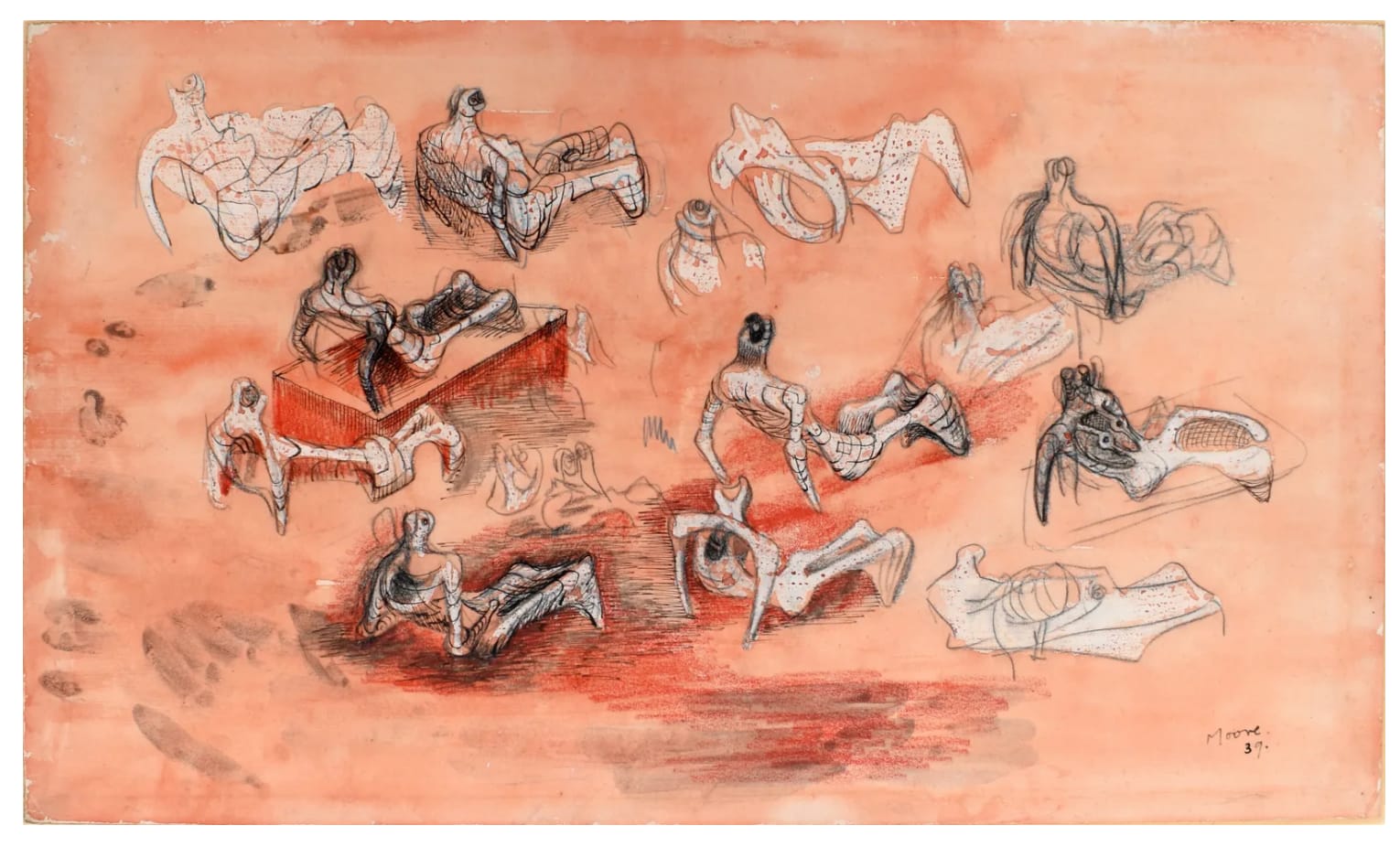Henry Moore U.K., 1898-1986
"There's no retirement for an artist, it's your way of living so there's no end to it."
-Henry Moore
Henry Spencer Moore was born on July 30, 1898, in Castleford, Yorkshire. Despite an early desire to become a sculptor, Moore began his career as a teacher in Castleford. After military service in World War I he attended Leeds School of Art on an ex-serviceman's grant. In 1921 he won a Royal Exhibition Scholarship to study sculpture at the Royal Academy of Art in London. Moore became interested in the Mexican, Egyptian, and African sculpture he saw at the British Museum. He was appointed Instructor of Sculpture at the Royal Academy in 1924, a post he held for the next seven years. A Royal Academy traveling scholarship allowed Moore to visit Italy in 1925; there he saw the frescoes of Giotto and Masaccio and the late sculpture of Michelangelo. Moore's first solo show of sculpture was held at the Warren Gallery, London, in 1928.
In the 1930s Moore was a member of Unit One, a group of advanced artists organized by Paul Nash, and was a close friend of Barbara Hepworth, Ben Nicholson, and the critic Herbert Read. From 1932 to 1939 he taught at the Chelsea School of Art. He was an important force in the English Surrealist movement, although he was not entirely committed to its doctrines; Moore participated in the International Surrealist Exhibition at the New Burlington Galleries, London, in 1936.
In 1940 Moore was appointed an official war artist and was commissioned by the War Artists Advisory Committee to execute drawings of life in underground bomb shelters. From 1940 to 1943 the artist concentrated almost entirely on drawing. His first retrospective took place at Temple Newsam, Leeds, in 1941. In 1943 he received a commission from the Church of St. Matthew, Northampton, to carve a Madonna and Child; this sculpture was the first in an important series of family-group sculptures.
Moore was given his first major retrospective abroad by the Museum of Modern Art, New York, in 1946. He won the International Prize for Sculpture at the Venice Biennale of 1948.
Moore executed several important public commissions in the 1950s, among them Reclining Figure, 1956-58, for the UNESCO Building in Paris. In 1963 the artist was awarded the British Order of Merit. In 1978 an exhibition of his work organized by the Arts Council of Great Britain was held at the Serpentine in London, at which time he gave many of his sculptures to the Tate Gallery, London. Moore died in Much Hadham, Hertfordshire, on August 31, 1986.






